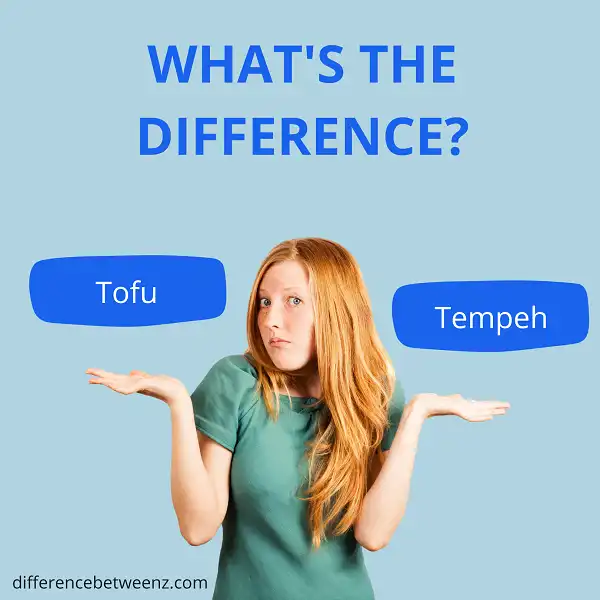If you’re new to the world of veganism and have found yourself wondering what all the fuss is about when it comes to tofu and tempeh, then this post could be exactly what you need. You may have heard people talking about them and wondered if they’re actually different, or just two names for the same thing. Well, we’ve got good news for you – there are some pretty significant differences between these plant-based proteins! In this blog post, we will delve deeper into tofu vs tempeh in order to educate our readers on their distinct characteristics so that everyone can make informed decisions about which one is best suited for their next meals.
What is Tofu?
Tofu is a versatile ingredient widely used in various Asian cuisines, particularly Chinese and Japanese. Tofu is made from condensed soy milk pressed into solid white blocks. It has become popular around the world for its nutritional value, as it contains no cholesterol and is rich in iron and calcium.
- Tofu can be used in different forms such as soft, firm, or extra-firm, and has a range of flavors depending on how it is prepared. Tofu can be fried, grilled, boiled, or pureed; making it a great substitution for meat in vegan recipes.
- It also absorbs flavors from marinades and sauces while cooking, making tofu dishes burst with flavor! Tofu isn’t just known for its health benefits though – it’s also incredibly affordable!
- Tofu can easily be added to recipes to make them more nutritious with minimal cost. With so many possibilities to cook up delicious meals featuring Tofu, there’s no wonder why this food has become so popular globally.
What is Tempeh?
- Tempeh is a type of fermented soybean product native to Indonesia which has gained immense popularity in other parts of the world over the years. Tempeh is an excellent source of plant-based protein, fiber, vitamins, and minerals, making it an ideal healthy food choice.
- Tempeh can be used as an ingredient in numerous dishes such as stir fry, stews, and sandwiches. The fermentation process gives Tempeh a nutty taste, appealing texture, and smell – all qualities that make Tempeh increasingly sought after by health-conscious consumers.
- Tempeh has been enjoyed by people in Southeast Asia for centuries and thanks to its attractive health benefits and delicious flavor, it is beginning to spread around the globe as well.
Difference between Tofu and Tempeh
Tofu and tempeh are both delicious plant-based proteins, but each have their own unique characteristics.
- Tofu is made by curdling soymilk with a coagulant such as calcium chloride or magnesium sulfate while tempeh is a soy product fermented into a firm patty.
- Tofu has a softer, creamier texture and is more neutral in flavour compared to the nuttier, denser taste of tempeh.
- Tofu can be used for dishes ranging from smoothies to teppanyaki-style entrees due to its ability to adapt easily, whereas tempeh works best when grilled or sautéed as its tight togetherness can help hold its form better during cooking.
- Tofu takes on the flavouring of whatever you add it to while in contrast, temeh’s distinct flavour provides an excellent base accompaniment for many dishes.
Both are hearty harbingers of nutrition making either an excellent option for vegetarians and vegans looking for something new!
Conclusion
Though both tofu and tempeh are made from soybeans, they are quite different in taste, texture, and preparation. Tofu is milder in flavor than tempeh, which has a nuttier taste. Tempeh is also firmer and chewier than tofu. When preparing these two soy products, it is important to note that tofu does not need to be cooked before consuming but tempeh must be cooked thoroughly. Both tofu and tempeh can be used in a variety of dishes or enjoyed on their own.


